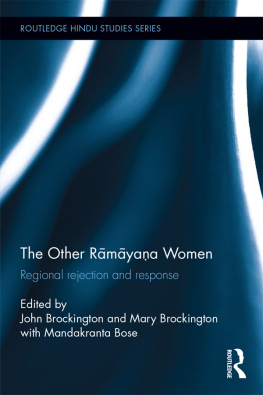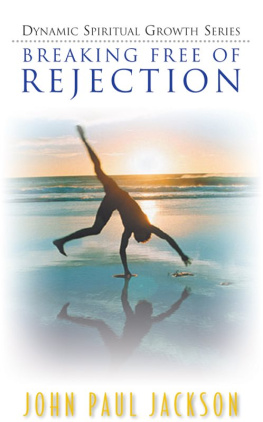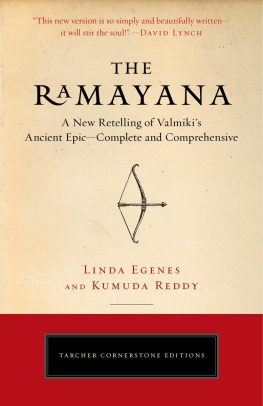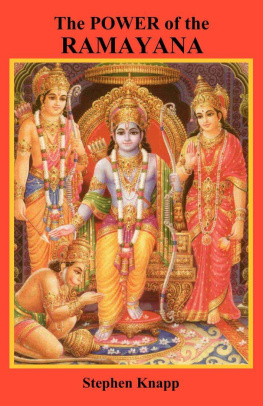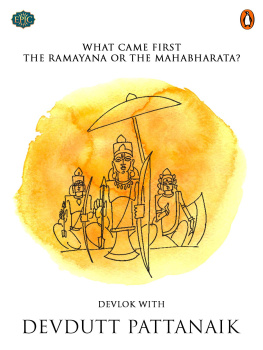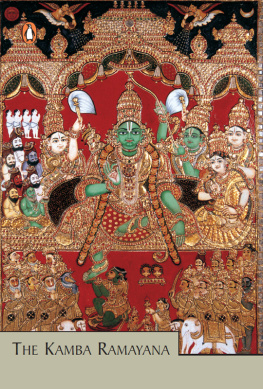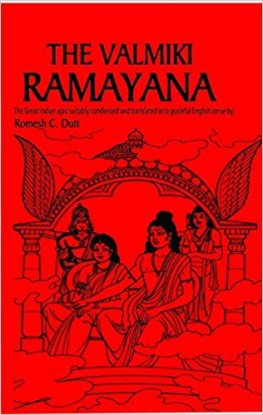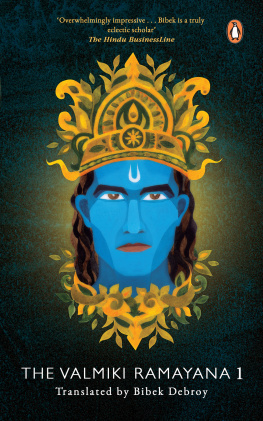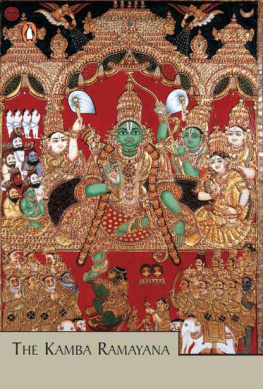The Other Rmyaa Women
This book is the first to present current scholarship on gender in regional and sectarian versions of the Rmyaa. Contributors explore in what ways the versions relate to other Rmyaa texts as they deal with the female persona and the cultural values implicit in them. Using a wide variety of approaches, both analytical and descriptive, the authors discover common ground between narrative variants even as their diversity is recognised.
It offers an analysis in the shaping of the heterogeneous Rma tradition through time as it can be viewed from the perspective of narrating womens lives. Through the analysis of the representation and treatment of female characters, narrative inventions, structural design, textual variants, and the idiom of composition and technique in art and sculpture are revealed and it is shown what and in which way these alternative versions are unique.
A sophisticated exploration of the Rmyaa, this book is of great interest to academics in the fields of South Asian Studies, Asian Religion, Asian Gender and Cultural Studies.
John Brockington is Emeritus Professor of Sanskrit at the University of Edinburgh, UK. He has published widely on the Sanskrit epics (Rmyaa, Mahbhrata, Harivaa).
Mary Brockington is a Research Fellow of the International Association of Sanskrit Studies. She has published many articles on narrative strategies in traditional literature, mostly on the Sanskrit epics.
Routledge Hindu Studies Series
Series Editor: Gavin Flood, Oxford Centre for Hindu Studies
The Routledge Hindu Studies Series, in association with the Oxford Centre for Hindu Studies, intends the publication of constructive Hindu theological, philosophical and ethical projects aimed at bringing Hindu traditions into dialogue with contemporary trends in scholarship and contemporary society. The series invites original, high quality, research level work on religion, culture and society of Hindus living in India and abroad. Proposals for annotated translations of important primary sources and studies in the history of the Hindu religious traditions will also be considered.
The Death and Afterlife of Mahatma Gandhi
Makarand R. Paranjape
Bhakti and Embodiment
Fashioning divine bodies and devotional bodies in Ka Bhakti
Barbara A. Holdrege
Textual Authority in Classical Hindu Thought
Rmnuja and the Viu Pura
Sucharita Adluri
Indian Thought and Western Theism
The Vednta of Rmnuja
Martin Ganeri
Debating Conversion in Hinduism and Christianity
Ankur Barua
Non-Violence in the Mahabharata
Sivas Summa on Rishidharma and the Gleaners of Kurukshetra
Alf Hiltebeitel
The Other Rmyaa Women
Regional rejection and response
Edited by John Brockington and Mary Brockington
The Other Rmyaa Women
Regional rejection and response
Edited by
John Brockington and Mary Brockington with Mandakranta Bose

First published 2016
by Routledge
2 Park Square, Milton Park, Abingdon, Oxon OX14 4RN
and by Routledge
711 Third Avenue, New York, NY 10017
Routledge is an imprint of the Taylor & Francis Group, an informa business
2016 John Brockington and Mary Brockington
The right of the editors to be identified as the authors of the editorial material, and of the authors for their individual chapters, has been asserted in accordance with sections 77 and 78 of the Copyright, Designs and Patents Act 1988.
All rights reserved. No part of this book may be reprinted or reproduced or utilised in any form or by any electronic, mechanical, or other means, now known or hereafter invented, including photocopying and recording, or in any information storage or retrieval system, without permission in writing from the publishers.
Trademark notice: Product or corporate names may be trademarks or registered trademarks, and are used only for identification and explanation without intent to infringe.
British Library Cataloguing in Publication Data
A catalogue record for this book is available from the British Library
Library of Congress Cataloging-in-Publication Data
A catalog record for this book has been requested
ISBN: 978-1-138-93401-6 (hbk)
ISBN: 978-1-315-67825-2 (ebk)
Typeset in Times New Roman
by Apex CoVantage, LLC
Contents
by Gavin Flood
JOHN BROCKINGTON
EVA DE CLERCQ
MARY BROCKINGTON
ULRIKE ROESLER
JOHN BROCKINGTON, MARY BROCKINGTON AND RACHEL LOIZEAU-PAJANIRADJA
ANNA DALLAPICCOLA
MANDAKRANTA BOSE
IMRE BANGHA
MARY BROCKINGTON
MANDAKRANTA BOSE
This is a very important book in the development of the serious study of the Rmyaa because it combines rigorous scholarship with contemporary concerns about gender and cultural values. This volume, the result of a conference organised under the direction of Mandakranta Bose at the Oxford Centre for Hindu Studies, brings together world experts on the text with an eye to contemporary concerns, and Mary and John Brockington have provided us with a fresh way of reading the Rmyaa that brings a deeper understanding of this rich and multifaceted text.
Many years ago, Paula Richman edited Many Rmyaas about the diversity of the text in different locations in different time periods, and it struck me then how open the text is and how it has been received in different generations according to different concerns. This is also true of its scholarly reception. Thus today, gender is an issue, and it is through this lens that we can read the text, and because it has what we might call semantic density, it delivers responses to contemporary questions. One reflection that this book provokes is the question of the complexity of the relationship between different readings, different versions, and the singularity of the work itself. Questions about the place of women in the text and the text as a sign of historical social relationships are raised and given different answers in this book. Questions about gender also lead to questions about the nature of the text itself and the relation of text to work. The idea that there are many Rmyaas is clearly a possibility. Or is it rather that we have one work, one Rmyaa, but different witnesses to that work (as the idea of the Critical Edition implies)? This is to posit, perhaps, a rather Platonic distinction between work and text, but we must maintain some such distinction in order to speak about different versions of the text, let alone different readings. Indeed, if we wish to argue for the primacy of some readings over other readings, then this entails a notional text outside the reader to measure different readings against. This is, of course, contested, but it seems to me that we need to distinguish not only between different readings but also between work and text. Borrowing a distinction from Judaism between the plain sense or literal meaning, pashat, and the interpreted sense, derash, we might say that the plain sense of the text has largely been established through philology, but the interpreted senses, that assume the philological work has been done, are numerous, as numerous as the situations of reading and the context of application.
So, The Other Rmyaa Women: Regional Rejection and Response

